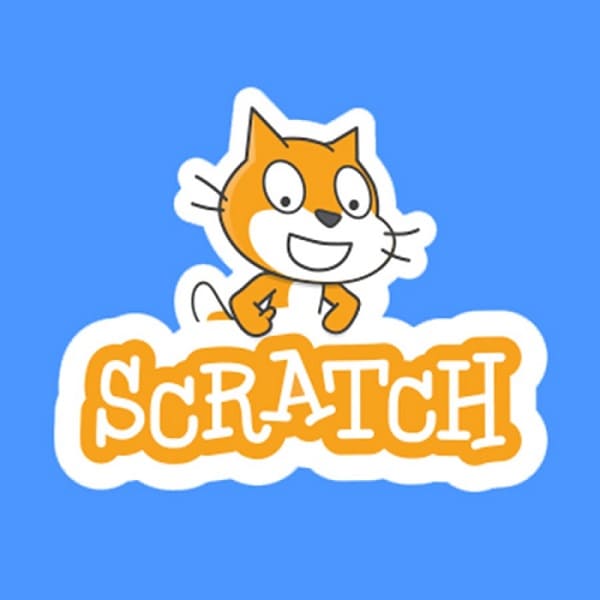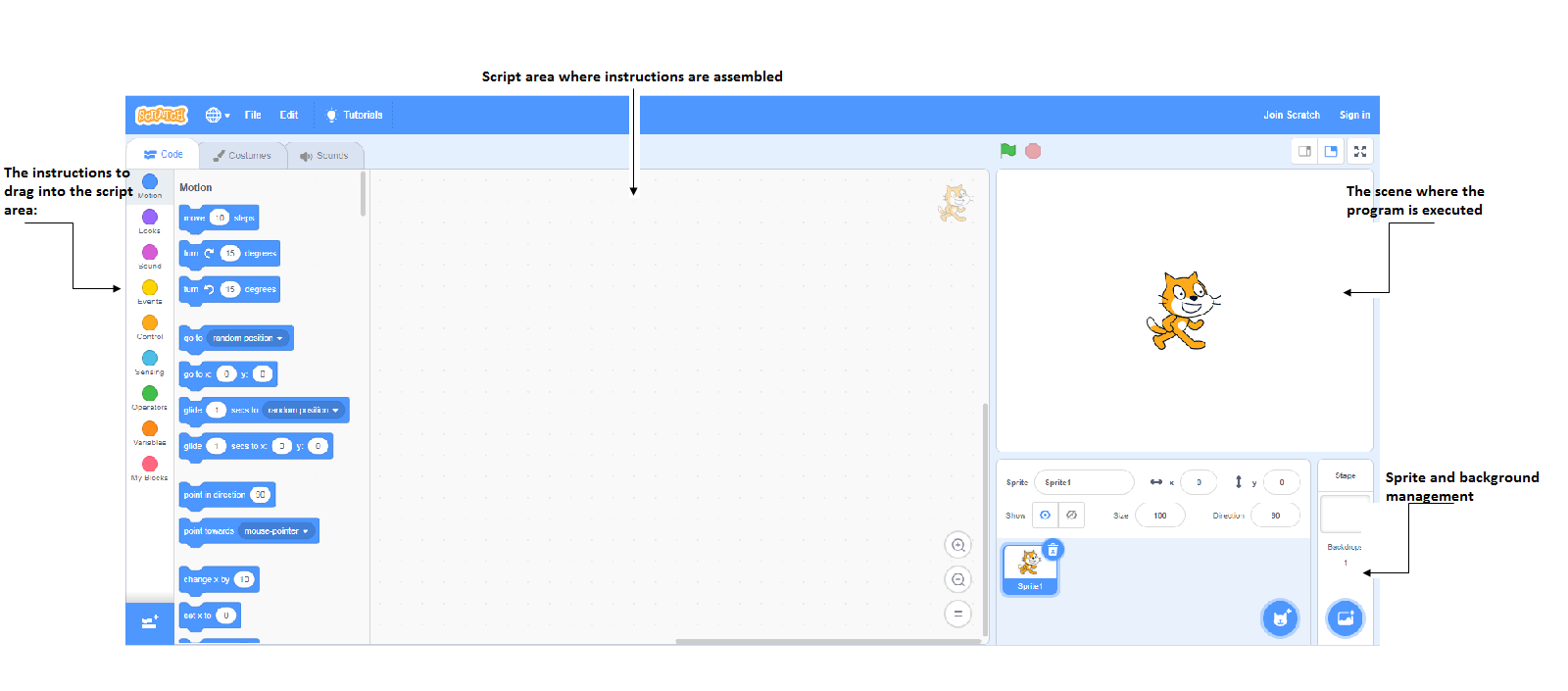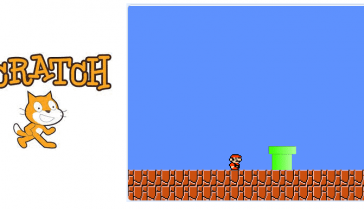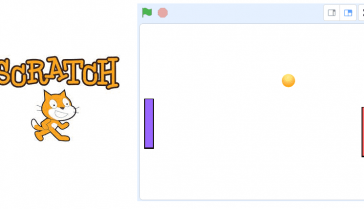
Presentation of the Scratch program

What is the Scratch program?
This section, we will introduce you to Scratch, a programming language developed at MIT’s Media Lab in the United States, which has captured the imagination of children all over the world. Scratch allows users to easily create their own stories, animations, games, music, interactive works of art and to share these creations on the Web. It is therefore ideal for children aged eight to eleven.
Scratch, developed by the MIT Media Lab in the United States, is the name given to this very powerful but very child-friendly programming language.
The term Scratch was chosen by its inventors for its commonality with the method used by a hip-hop DJ to mix different music tracks to create new sounds.
The Scratch language has similarities to children’s brick-building games. It uses a simple structure of interlocking bricks or graphical blocks of computer code to create and control sound, music and images. It is therefore very suitable for children’s fun and learning, as it uses their natural penchant for tinkering with building materials to create different shapes, games and stories within a new dimension. exciting interactive digital. Gone are the days of the difficult and boring text syntax that traditionally made up a computer program.
Scratch provides children and young people with a unique environment to develop and utilize their artistic and creative talents through creating engaging animations. During the training sessions, the children work together to carry out certain projects, learn to plan, design and share tasks. They are encouraged to show and explain their completed work to other participants, where critical analysis and compliments from their classmates are an integral part of the presentation and communication learning process.
Scratch empowers kids to develop their artistic and creative skills in a challenging, rewarding, and adventurous digital world.
Teaching Scratch uses many different aspects of elementary school curricula, such as art, languages, and especially numeracy and literacy.
As children enjoy creating and sharing Scratch projects, they learn important math and computing concepts, such as arithmetic (addition, subtraction, multiplication, division of numbers), geometry (one branch of mathematics which deals with measurement, relations of points, lines, angles, etc. by terms such as coordinates, shapes, size, relative position of figures), algebra (variables, symbols representing numbers to explain quantities and numerical relations) as well as additional concepts such as algorithms, while learning to reason systematically, solve problems, work together and develop presentation skills.
Scratch allows users to create a wide variety of online projects that can reflect their personal interests and can also be used as resources in many school curriculum topics, for example: creating interactive games, mapping a visit to different countries to a geography class, produce a concert for a music class, build a doll out of multiple clothes in an art class, or create a digital story about a sports game, folk tale, or important science question such as the causes of global warming climatic. With elementary students, the teacher can expand the artistic elements of Scratch by having them make clay models of their sprites when planning their projects.
Presentation of the Scratch interface:

1) the instructions to drag into the script area:
This area is located to the left of the Scratch interface which contains blocks of code such as Movement, Appearance, sound, etc.
2) Script area:
This area contains instructions or commands that tell the sprite or sprite what to do and are written in sequence. The user drags individual pieces of code from the block palette into the script area. These blocks then fit together like pieces of bricks to create the instructions.
3) The scene :
The scene allows the program to be executed: it is here that the projects come to life and that we can visualize the progress of the project.
4) Sprite and background management :
This is where the list of objects created during the project appears, including the scene. They are identified by thumbnails on which you click to access their properties and the scripts associated with them.



















